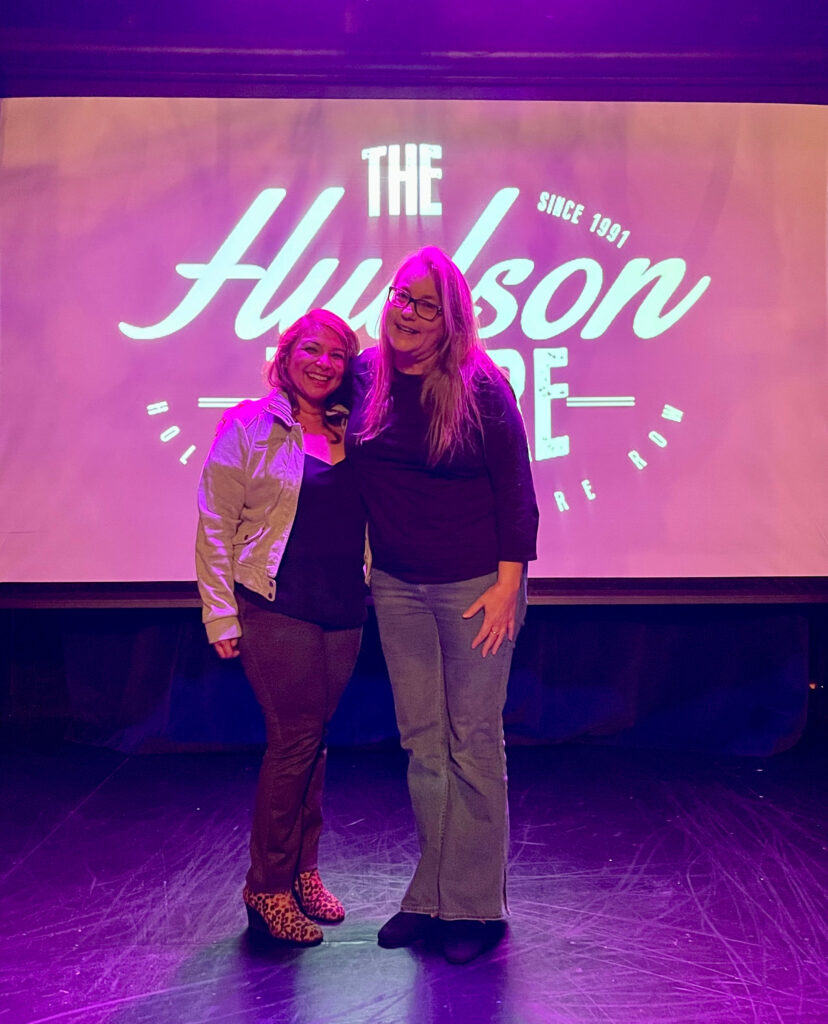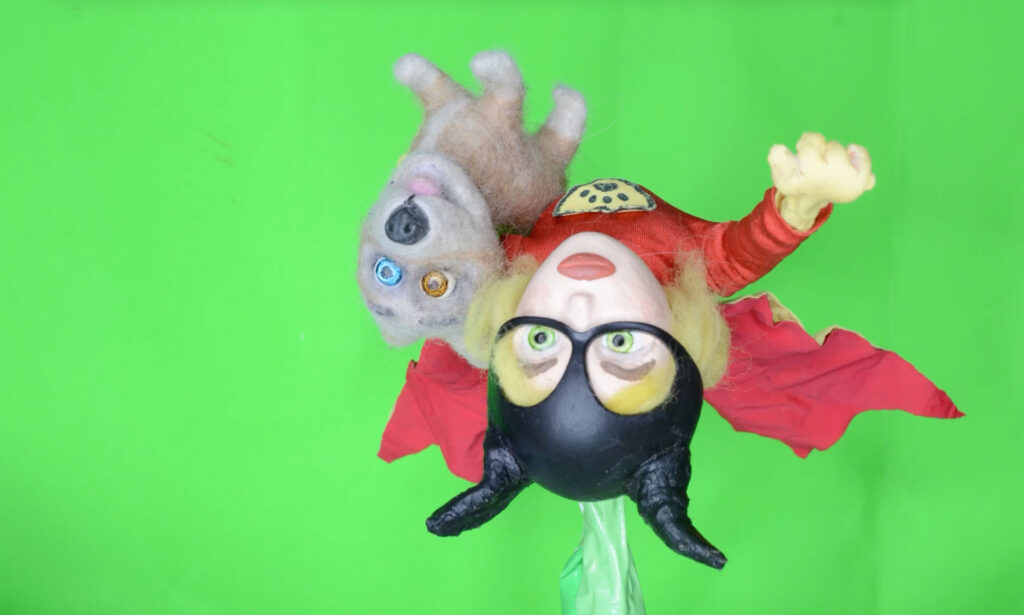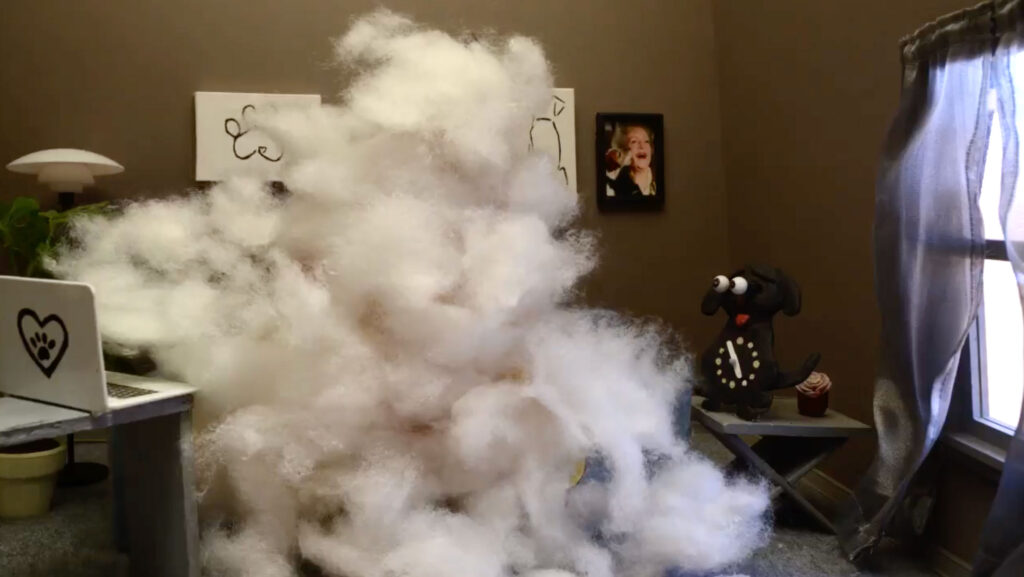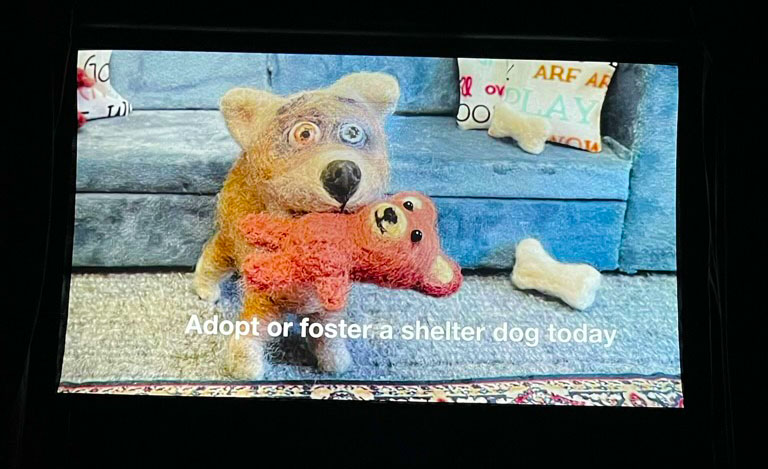By Rachel Reyna
Change is often made when artists use their craft as a vehicle to advocate for the causes they believe in.
Academy of Art University School of Animation & Visual Effects alum Cynthia Gall (M.F.A., ‘23) is using what she learned studying stop-motion animation to advocate for voiceless creatures in our society—man’s best friend.

Gall, who has pets of her own, actively works to find homes for dogs in high-kill shelters. Her love for animals and her passion for rescuing dogs and finding their forever homes inspired her short stop-motion animated film and senior thesis, “To the Rescue.”
Gall first won an award while still at the Academy for her heartwarming film at Spring Show 2023. She later picked up two awards at the 2023 Cannes World Film Festival: Best Cause-Driven Film and Best Super Short Film.
“The awards for Best Super Short Film and Best Cause-Driven Film from the Cannes World Film Festival meant a lot to me as this is a prestigious international festival,” Gall shared with Art U News via email. “Receiving an award for the cause of dog rescue showed me that this fight to save dogs’ lives resonates internationally.”
The film follows a girl who sees an online posting about a dog that will be euthanized if not adopted soon. The girl transforms into a superhero with a cape and the power to fly, which she uses to rescue the pup. The film has an endearing ending, showing the dog finally at home with his “superhero” of an owner, sending a message to viewers to rescue a shelter animal and become their superhero!

“I got my dogs from the shelter and from rescue groups, and they are family. I can’t imagine life without dogs,” said Gall. “In my spare time from classes at the Academy, I had been cross-posting dogs from high-kill shelters to Facebook groups for people wanting to adopt or foster dogs. It is a never-ending fight to get them safely out of the shelter before they get euthanized due to issues like overcrowding. Rescue groups do the best they can, but without fosters or adopters, they cannot keep taking in dogs. I made ‘To the Rescue’ to help inspire people to join the fight and adopt or foster dogs if they are able.”
Telling stories through artistic mediums has been an ongoing practice for Gall over the years. She previously worked on children’s books of her own—writing and creating imagery.
“Ten years prior to studying animation at the Academy, I had been photographing scenes of sculpted figures acting out stories on sets that I had designed for children’s books that I had written,” said Gall. “I would say I have always been primarily a storyteller; only within the last ten years have I made the decision to animate my images rather than leave them static.”
Within ANM at the Academy, Gall was a part of the school’s stop-motion animation track as an online student. Her time in the program sharpened her creative skill set and allowed for opportunities to collaborate with both her peers and faculty.

“Each stop-motion course taught by Norm DeCarlo, Aaron Guadamuz, and Annie Wong prepared me in different ways. Norm taught me much in the ways of puppet and set design and construction—how every choice you make is important,” said Gall. “Aaron and Annie were fantastic coaches when it came to animating the piece and providing the right ambiance. The nuances of timing and making the right choices in terms of framing a shot or posing the characters were lessons I applied to the piece to make it hit the right emotional tones. Annie knew just the right head tilts for the interactions between human and canine to bring a tear to the eye. As a musician, Aaron was instrumental (no pun intended) in sound choices—including having the correct sound of silence in a room or a cage—I was not aware that there was a difference. All of these influences will stick with me moving forward in my animation career.”
“I’ve known Cynthia for a while, and her grad thesis was different at first,” remembered ANM Stop-Motion Lead Aaron Guadumuz. “[B]ut then she switched over to [“To the Rescue”] about the pet adoption, which I thought was cool because that’s something that’s really important to her.”
Stop-motion is a unique form of animation that requires the creation of sets and figurines that are then photographed repeatedly to create a motion picture.
“The thing about stop-motion that makes it unique is that it’s almost more like filming an actor’s performance, and the animator is that actor. So, what you’re filming is your performance,” explained Guadamuz. “It inherently has a lot of imperfections, which kind of makes it a little bit more human, and I think that’s why so many people gravitate towards it and why it’s had a renaissance in the [recent years].”

For “To the Rescue,” a great deal of time and effort was put into its creation. Gall shared that while the materials she utilized in creating the film’s set and puppets were similar to those that she worked with on her children’s book illustrations, it was no less an arduous process.
“I used Sculpey Clay, Cosclay, and silicone for the girl puppet—topped with wool hair from my needle felting supplies and hand-painted acrylic beads for eyes,” said Gall. “I bought the clothing on Etsy. The dog was needle felted (using wool), Sculpey Clay, and had hand-painted acrylic beads for eyes.”
Further detailing the setting, Gall added, “The sets were constructed using matte boards, and the couches were wood covered in blue velvet. For the shelter, the cage was made out of cooling racks for cookies. The wall tile was a backsplash sticker for kitchens.”

“She persevered, and she got it done. I think on a grand scheme level, being able to [complete] something and put it out into the world is just something that very few people do. So, it was great that she was able to do that,” said Guadamuz.
Through her effort and the continued success of “To the Rescue” at festivals, Gall is able to reach a wider audience and continue to spread the word about the importance of adopting and rescuing animals from high-kill shelters.
“The film is still on the festival circuit, winning awards in countries from India to Italy,” shared Gall. “I would like to make as much impact to better dogs’ lives worldwide as a little film can.”
Watch “To the Rescue” below.
Featured photo: A look at “To the Rescue” being screened at the Hudson Theatre in Hollywood, California. Photo courtesy of Cynthia Gall.
